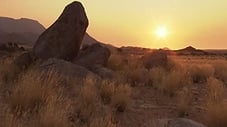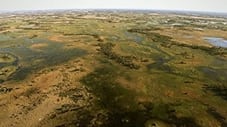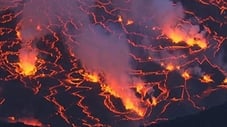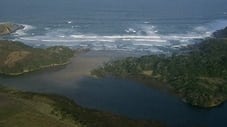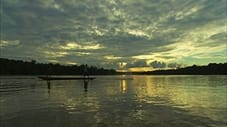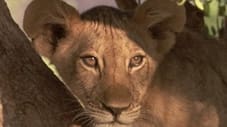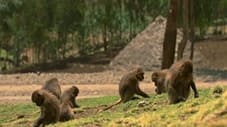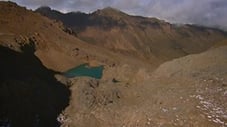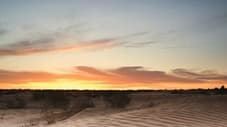
Wildest Africa (2010)
← Back to main
Colin Salmon as Narrator
Episodes 13
Ngorongoro: Born of Fire
Tectonic and volcanic activity created the Great Serengeti Rift and the giant Ngorongo crater, which houses an isolated population of species such as wildebeest and lions which normally participate in the greatest land animals migration, but here are prone to excessive incest, especially since Maasai grazing grounds lock out wild relatives. Other lakes with peculiarities house or host such remarkable populations as most of the world's small flamingos.
Read MoreNamibia: The Sands of Time
Namibia's Namib desert is the result of Atlantic winds eroding ancient mountains. Extremely hot and arid, it requires elaborate adaptations from wildlife and rare tribal populations.
Read MoreOkavango: Water in the Desert
The Okavango Delta, in northern Botswana, comprises various wetlands, some (river arms and marshes) deep enough for hippopotamuses to live in, many drying out many months, some barely seasonal waterholes. Many species (like buffalo) and people migrate in and out on the flood rhythm, while only the Bushmen survive all year in the neighboring Kalahari desert.
Read MoreZambezi: River of Life
For 2000 miles, the mighty Zambezi flows from the Zambian highlands trough Angola, Botwsana and Zimbabwe to Mocambique, to end in the Indian Ocean. Its immense water volume has a massive impact on wildlife in its huge flood areas and trough erosion reshapes its own bed, most spectacularly at the Victoria falls, the world's greatest waterfall.
Read MoreNile: An African Odyssey
The world's longest river flows from the heart of Africa into the Mediterranean Sea. What feeds this inexhaustible river to make its waters so fertile?
Read MoreThe Virungas: Land of Ice and Fire
How is this epic land of fire and ice home to some of the world's most iconic animals and the most mysterious landscapes?
Read MoreMadagascar: Island of the Monsters
Madagascar is truly a weird and wonderful land. Isolated on an island of extreme and magical looking locations, life has adapted and diversified. With few predators, numbers have proliferated and natural selection has gone mad.
Read MoreCape Coast: Where Worlds Collide
Stretching 1,500 miles from the frigid waters of Cape Point to the sub-tropical seas of Kwazulu- Natal, Africa's Cape Coast is where irresistible force meet immoveable object.
Read MoreCongo: The Untamed Heart
A wilderness of extremes. How do these uniquely diverse, ancient people coexist alongside wildlife found nowhere else in the world?
Read MoreLake Turkana: Land of the Crocodile
Stretching for thousands of square kilometres, the world's largest salt lake receives little rainfall and temperatures fluctuate wildly. How can life flourish in this environment?
Read MoreEthiopia: Land of Extremes
In a wilderness of extremes, how do the diverse and ancient people of Ethiopia coexist alongside wildlife found nowhere else in the world?
Read MoreMount Kenya: African Heart of Ice
Reaching high into the sky at Africa's equator, Mount Kenya stretches up into the troposphere. How does life survive on these harsh slopes?
Read MoreSahara: Life on the Edge
Stretching for millions of miles, the world's largest desert receives little rainfall and temperatures fluctuate wildly. How do people and animals flourish?
Read More
